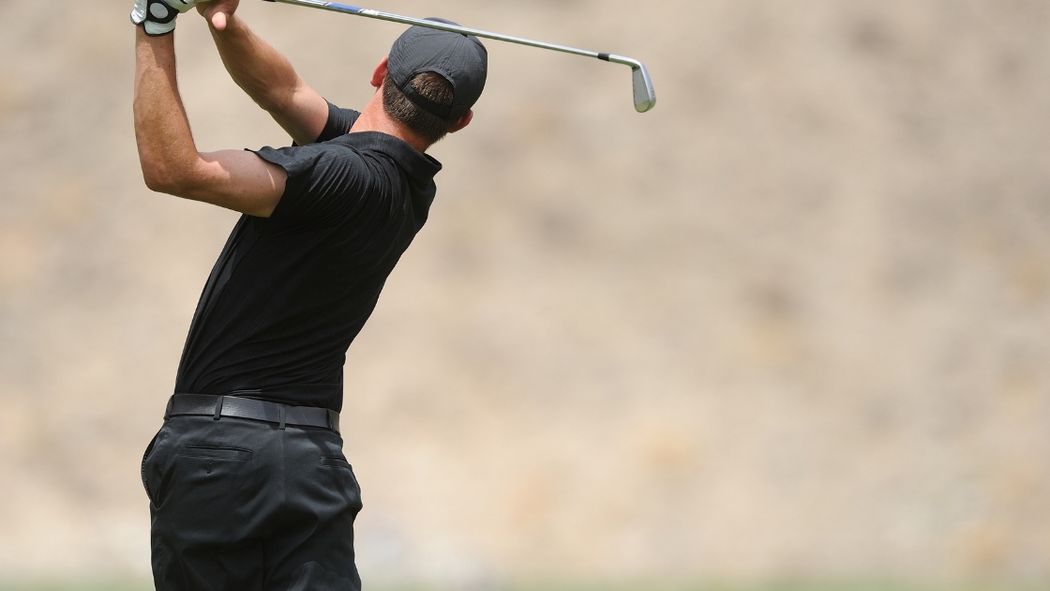Have you ever wondered why some golf clubs feel just right in your hands, while others seem to throw off your entire game? The answer may lie in the often-overlooked concept of swing weight. In this blog post, we’ll explore the importance of understanding swing weight for golfers of all skill levels and how it can greatly impact your performance on the course.
By diving into the science behind swing weight, learning how to determine your optimal swing weight, and examining the impact of swing weight on various aspects of your game, you can unlock the power of swing weight for maximum performance and take your game to the next level.
What is Swing Weight in Golf?

Swing weight is a measure of the sensation of heaviness a golf club produces when swung. Having the proper swing weight across all clubs is crucial for consistency in your game. It’s not just about the actual weight of your club, but also the distribution of that weight – specifically, the balance between the club head, shaft, and grip, which contributes to the club’s swing weight.
Finding the correct swing weight can significantly improve your performance, as it can have a considerable impact on your swing speed, swing tempo, and the ability to maintain a consistent swing path. In order to truly harness the power of swing weight for optimum performance, it’s important to understand the science behind it and how it differs from total weight.
The Science Behind Swing Weight
The concept of swing weight was first introduced by clubmaker Robert Adams and is a measurement of a golf club’s weight distribution that impacts the club’s feel and performance. Swing weight is typically measured using a specific balance scale that determines the overall weight distribution of the club. The heavier the clubhead is relative to the grip end of the club, the lower the swing-weight will be on the alphabetical scale.
Swing weight matching across a set of clubs can lead to more consistent shots and better overall performance. It’s important to have the same swing weight in your entire set of clubs to ensure consistency throughout your game. In order to achieve the desired swing weight, golfers may employ different club configurations such as shorter shafts with heavier club heads or longer “high balance” shafts with heavier club heads.
Swing Weight vs Total Weight
While swing weight focuses on the perceived heaviness of a club when swung, total weight refers to the actual weight of the entire club. It’s essential to distinguish between the two, as they both play significant roles in club performance, but in different ways. For instance, a higher total weight might make a club feel heavier in your hands, but it doesn’t necessarily mean that it will have a higher swing weight.
The balance point of the club, which is the point where the club is evenly balanced, plays a significant role in determining the swing weight. Factors such as:
- grip weight
- shaft weight
- head weight
- club length
Can all affect swing weight. By understanding the difference between swing weight and total weight, you can make more informed decisions when selecting and customizing your golf clubs.
Determining Your Optimal Swing Weight
Finding your optimal swing weight is a personal process that depends on your individual preferences and playing style. It’s important to consider the factors that influence swing weight, such as:
- The weight of the clubhead
- The weight of the shaft
- The weight of the grip
- The length of the shaft
By identifying the right balance between these factors, you can achieve the ideal swing weight for your game and ultimately improve your performance on the course.
Customization techniques can help you fine-tune your swing weight to suit your unique needs. Whether it’s adjusting the club head weight, changing the shaft weight, modifying the grip weight, or altering the club length, these techniques can help you achieve the optimal swing weight for your game.
To ensure accuracy and consistency in your swing weight adjustments, it’s essential to understand and take into account the various factors influencing swing weight.
Factors Influencing Swing Weight
A variety of factors can influence swing weight, including:
- Grip weight
- Shaft weight
- Head weight
- Club length
Each of these factors plays a crucial role in determining the overall driver swing weight of a golf club. For instance, a difference of approximately 10g in grip weight results in 1 swing weight point, while a shift in club head weight has the most significant bearing on swing weight, with approximately 2g per swing weight point. Understanding swing weight points can help golfers optimize their club performance.
Varying shaft length can also have a considerable impact on swing weight. It is generally accepted that a change of 1/2 an inch in the length of the shaft will result in a shift in the swing weight of +/- 3. By understanding the influence of each factor, you can make informed decisions when customizing your golf clubs to achieve the optimal swing weight for your game.
Customization Techniques
There are several customization techniques available to help you achieve the optimal swing weight for your game. One option is to adjust the club head weight by altering the material of the club head, incorporating additional weight to the club head, or varying the size of the club head.
Another method is to modify the shaft weight by selecting a shaft of a different weight or by attaching additional weight to the shaft. When making adjustments, it’s important to alter only one variable at a time to better understand what works and what doesn’t.
By systematically adjusting each factor, you can fine-tune your swing weight for maximum performance and improved consistency on the golf course.
The Impact of Swing Weight on Your Game
Swing weight has a significant impact on various aspects of your game, including swing speed, consistency, and control. A well-balanced club with the right swing weight can improve your swing consistency and overall performance on the course. Conversely, an improperly balanced club with an incorrect swing weight can lead to erratic shots and reduced performance.
By finding your optimal swing weight, you can enhance your performance in several ways. A lighter swing weight can lead to increased swing speed, while a heavier swing weight may provide more control and consistency. Ultimately, discovering the correct swing weight can result in more precise and consistent results on the golf course.
Swing Weight and Swing Speed

Weight distribution is a vital factor for swinging a club. It significantly affects swing speed. Here are some key points to consider.
- A lighter swing weight can result in a faster swing speed, as it requires less effort to swing the club.
- On the other hand, a heavier swing weight can lead to a slower swing speed, as it demands more effort to swing the club.
- Finding the right balance between swing weight and swing speed is crucial for maximizing your performance on the golf course.
Professional golfers typically adjust their swing weight to accommodate their individual preferences and swing mechanics, to optimize their performance. By understanding the relationship between swing weight and swing speed, you can make more informed decisions when selecting and customizing your golf clubs to achieve the optimal level of performance.
Consistency and Control
Consistent swing weight across all your clubs plays a vital role in maintaining control and accuracy on the golf course. With the right swing weight, you can achieve a heightened sense of the club-head during all parts of the swing, resulting in improved control and accuracy. By finding the correct swing weight for your clubs, you can enhance your consistency and control on the golf course, leading to better overall performance.
Achieving consistent swing weight across your entire set of clubs is essential for maintaining a consistent swing path and tempo. By ensuring that your clubs are properly balanced and customized to your unique preferences and playing style, you can improve your overall consistency and control, leading to more precise and consistent results on the golf course.
Swing Weight in Professional Golf
Swing weight is a critical consideration in professional golf, as it can significantly impact a player’s performance on the course. Professional golfers often adjust their swing weight to accommodate their individual preferences and swing mechanics, resulting in optimized performance on the course. By examining the swing weight choices and trends among professional golfers, we can gain valuable insights into how swing weight influences the game at the highest level.
Recent trends and innovations in swing weight technology have further highlighted the importance of swing weight in professional golf. By understanding and adapting to these trends, professional golfers can continue to fine-tune their clubs and harness the power of swing weight for maximum performance.
Tour Pros’ Swing Weight Choices
Top Tour Pros have their unique swing weight preferences, which are often based on their individual swing mechanics and playing style. Sergio Garcia uses a light golf swing weight, which is termed as C-8. This light swing weight is considered rather uncommon compared to others. On the other hand, Bryson Dechambeau does not employ a uniform swing weight due to his utilization of one-length irons, resulting in notably heavy wedges and light long irons.
Generally, professional golfers have swing weights ranging between D2 and D5 for their irons. By examining the swing weight preferences of top Tour Pros, we can gain valuable insights into the factors that contribute to their success and learn how to optimize our own swing weight for maximum performance.
Trends and Innovations
Recent trends and innovations in swing weight technology have had a significant impact on professional golf. Some of these innovations include:
- Testing of TPT shafts with golfers of all abilities
- Utilizing Precision Weighting Technology in PXG clubs
- Factoring in aerodynamics and component weight to improve swing performance
These trends and innovations have enabled professional golfers to enhance their swing performance through factors such as aerodynamics and component weight. As a result, professional golfers have been able to increase their swing speed and accuracy, leading to improved performance on the course.
Swing Weight Measurement and Adjustment
Measuring swing weight is a crucial step in optimizing your golf club’s performance. Various methods can be used for measuring swing weight, such as using a swing weight scale or a DIY calculator.
It’s important to ensure the accuracy of your measurements and maintain the swing weight scale in a consistent location for precise results.
Once you have accurately measured your swing weight, you can make adjustments by altering:
- the club head weight
- the shaft weight
- the shaft length
- the grip weight
By making small adjustments and fine-tuning your swing weight, you can significantly improve your performance on the golf course.
DIY vs Professional Clubfitting
When it comes to measuring and adjusting swing weight, you have the option of doing it yourself (DIY) or seeking professional assistance. DIY clubfitting allows you to customize your clubs at a lower cost, without the need for specialized equipment or expertise. However, it may not provide as accurate and consistent results as professional clubfitting.
Professional clubfitting is conducted by certified clubfitters who have access to specialized equipment and knowledge. They can help detect any potential swing issues that may be impeding your performance, and provide more precise and consistent results in comparison to DIY methods. While professional clubfitting may be more costly than DIY clubfitting, the benefits of improved performance and consistency on the golf course can be well worth the investment.
Summary
In conclusion, understanding and optimizing swing weight is crucial for golfers of all skill levels. By delving into the science behind swing weight, learning how to determine your optimal swing weight, and examining the impact of swing weight on various aspects of your game, you can unlock the power of swing weight for maximum performance.
Remember, the right swing weight can significantly improve your game, so invest the time and effort to fine-tune your clubs and harness the power of swing weight for maximum performance. With the right balance and customization, you can elevate your game to new heights!
Frequently Asked Questions
What is swing weight?
Swingweight measures the club balance as felt when the club is standard, taking into account the moment of inertia for the entire club.
Matching the moment of inertia for a set of clubs is more difficult, but rewarding.
What is a D1 swing weight?
D1 swing weight is a club type that is heavier than D2 and better for golfers with a slower pace of play. It determines how stiff the shaft is, which is the long tapered tube connecting the golfer’s hands to the clubhead, used to generate centrifugal force to effectively strike the ball.
This type of club is beneficial for golfers who have a slower pace of play, as the heavier weight helps to generate more power and accuracy when striking the ball. The stiffness of the shaft also helps to ensure that the shaft is stiff.
Can you feel swing weight?
Yes, swing weight can be felt by balancing a club on a fulcrum and measuring the pull of the clubhead end. This is done with a swing weight scale using logarithmic measurement, which is then used to determine the swing weight rating.
How can I determine my optimal swing weight?
To determine your optimal swing weight, consider the factors that influence it, such as the weight of the clubhead, shaft, and grip, as well as the length of the shaft.
This will help you find the ideal swing weight for your game.
What are some customization techniques to achieve optimal swing weight?
Customization techniques such as adjusting the club head weight, changing the shaft weight, modifying the grip weight and altering the club length can help you achieve optimal swing weight for improved performance and consistency on the golf course.
These techniques can help you find the perfect balance between power and control, allowing you to hit the ball farther and more accurately. With the right customization, you can take your game to the next level.

